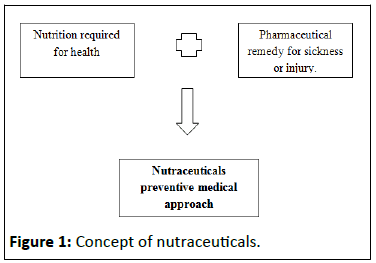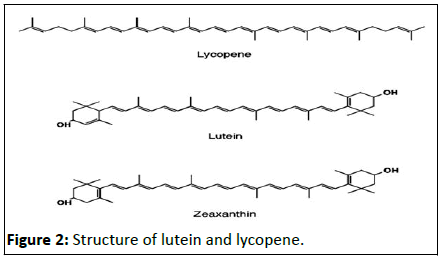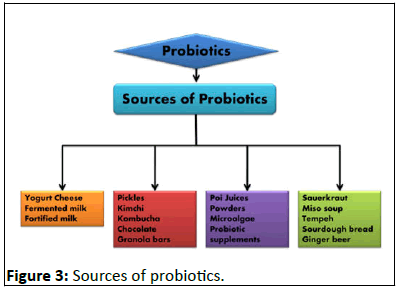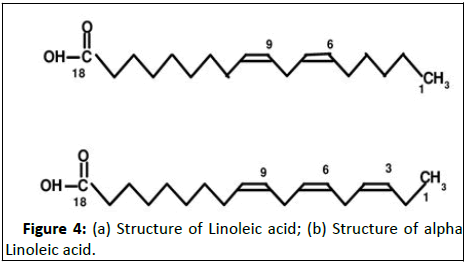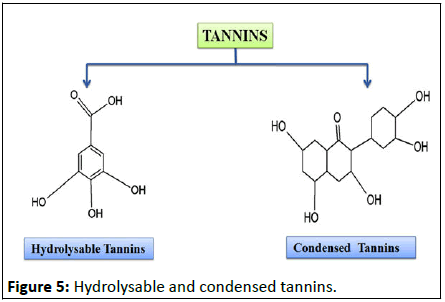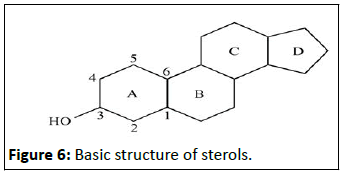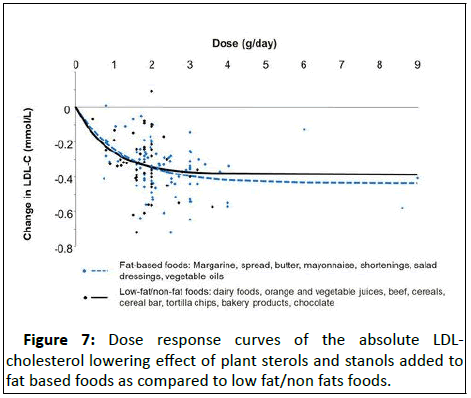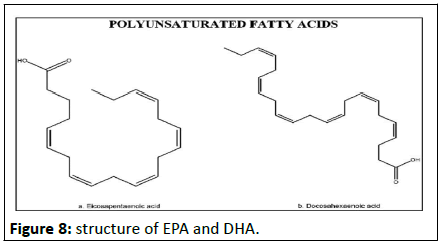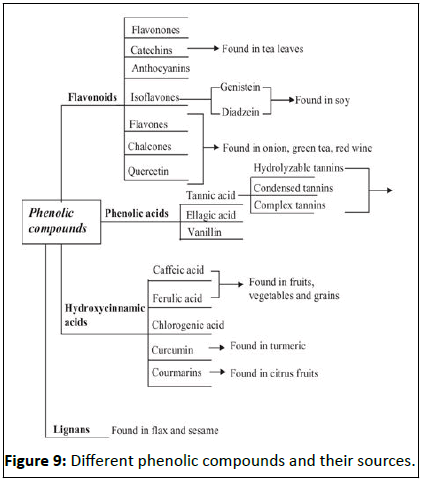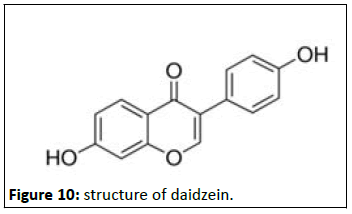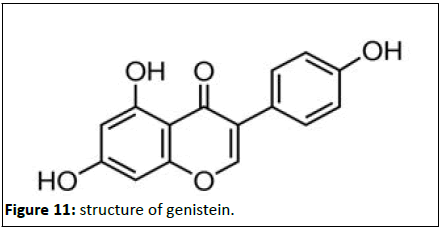Nutraceuticals-A Review
Mrunali Nemade*
Department of Pharmaceutical Sciences, Parul University, Gujarat, India
- *Corresponding Author:
- Mrunali Nemade
Department of Pharmaceutical Sciences
Parul University
Gujarat
India
E-mail: mrunalinemade.ksp@kpgu.ac.in
Received date: August 27, 2022, Manuscript No. IPCTN-22-14394; Editor assigned date: August 30, 2022, PreQC No. IPCTN-22-14394 (PQ); Reviewed date: September 14, 2022, QC No. IPCTN-22-14394; Revised date: December 28, 2022, Manuscript No. IPCTN-22-14394 (R); Published date: January 04, 2023, DOI: 10.36648/IPCTN.8.1.001
Citation: Nemade M (2022) Nutraceuticals-A Review. J Nutraceuticals Food Sci Vol:8 No:1
Abstract
The word nutraceuticals is a combination of the terms ‘nutrition’ and ‘pharmaceutical’. They are the part of food that provides the health benefits and are used for prevention and treatment of diseases. The food products used as nutraceuticals can be summarized as dietary fiber, prebiotics, probiotics, polyunsaturated fatty acids, antioxidants and other different types of herbal/natural foods. The main benefit of nutraceuticals is that they have negligible side effects. Also, they increase health value of the diet and may help us to live longer. Researchers have revealed that the involvement of all these nutraceuticals with their examples and applications are beneficial in treatment of various disorders. Due to many such advantages, now more and more people are shifting towards nutraceuticals. The presented review paper is an attempt to categorize all types of nutraceuticals with their specific applications in the treatment of various disorders related to human health. Ultimately, it is to ensure better quality of life and help to formulate and invent further innovative research in new products under nutraceuticals.
Keywords
Nutrition; Human health; Nutraceuticals; Medicine; PUFA; Diet
Introduction
The standard of living in terms of income, spending and lifestyle has improved with commercial development. However, it has also thrown up a prime challenge in the form of lifestyle diseases. The first victim of this lifestyle change has been food habits. Consumption of junk food has increased, which has led to a number of diseases related to nutritional deficiencies [1]. Nutraceuticals can play a major role in directing them. Therefore nowadays more and more people are turning to natural products rather than other synthesized products.
Stephen de felice coined the word ‘nutraceuticals’ by combining the terms ‘nutrition’ and ‘pharmaceutical’ in year 1989. According to Stephen de felice, ‘nutraceuticals’ are food or part of a food that provides health benefits and are used for prevention or treatment of a disease’. Hippocrates (460-377 BC), who is known as the father of modern medicine specified that, ‘let food be the medicine and medicine be the food’ to establish the relationship between appropriate foods for health and their therapeutic benefits.
Utilization of pharmaceutical antibiotic would build up tolerances which make it ineffective in the long run. It is a better way to choose such nutraceuticals in our daily life, which would be not only capable of normalizing our body functions (even in disease condition) but also preventive and nutritive, and they also improve our immune system.
Literature Review
In human health, nutraceuticals play a major role in treating various diseases like obesity, cardiovascular diseases, cancer, osteoporosis, arthritis, diabetes, cholesterol etc. They also help in maintaining our normal physiological functions [2].
Nutraceuticals are also known as nutritional supplements, medicinal food and dietary supplements (Figure 1).
Benefits of nutraceuticals
• Negligible side effects.
• May help us live longer.
• May increase the health value of our diet.
• More health benefits.
• It naturally provide dietary supplements.
• It is easily available and inexpensive.
• It also provides food for populations with special needs (e.g. nutrient dense foods for the elderly) (Table 1).
| Sr. No | Functional ingredients | Sources | Medicinal use |
|---|---|---|---|
| 1 | Carotenoids: Alpha and beta carotenoids | Fruits, vegetables, carrots | Neutralize free radicals that may cause damage to cells |
| 2 | Lycopene | Tomato products (ketchup, sauces) | Reduce risk of prostate cancer. |
| 3 | Lutein | Green vegetables | Risk of muscle degeneration is reduced. |
| 4 | Beta glucan, soluble fibers | Psyllium, barley, oats | Risk of cardiovascular diseases is reduced. |
| 5 | Dietary fibers, Insoluble fiber | Wheat, bran | Reduce the risk of breast or colon cancer. |
| 6 | Conjugated linoleic acid | Meat products, cheese | Decrease risk of cancers and improve body composition |
| 7 | Fatty acids: Long chain omega-3 fatty acids DHA/EPA | Fish oil and salmon | Improve mental and visual functions, reduces the risk of cardiovascular diseases |
| 8 | Tannins | Cranberries, chocolate, coca | Improve urinary tract, reduces risk cardiovascular diseases |
| 9 | Phenolics: Anthracyanides, catechins, flavanones, lignans | Tea, citrus fruits, rye, flax, vegetables | Prevent cancer and renal failure |
| 10 | Probiotics/Prebiotics | Onion powder, jerusalem, artichokes | Improve quality of intestinal micro flora, gastrointestinal health. |
| 11 | Plant sterols: Stanol, ester | Corn, soy, wheat, wood oil | Inhibits cholesterol absorption and hence lowers blood cholesterol |
| 12 | Minerals: Calcium, selenium, potassium, zinc copper | Food | Important constitute of balanced diet |
| 13 | Soya phytoestrogens: Isoflavones, Daidzein, Genistein | Soya bean and other soy based foods | Protection against some heart diseases and cancers, lowers LDL and total cholesterol |
Table 1: Classification of nutraceuticals.
Carotenoids
Carotenoids are a family of over 600 fat soluble plant pigments, approximately 20 of which are present in human tissues and blood. They are potent Reactive Oxygen Species (ROS) scavengers, which protects the skin from oxidative stress. Human beings and animals cannot synthesize carotenoids, so they must obtain them via ingestion of foods or supplements [3].
B-carotene is a precursor to vitamin A. It protects cells from damage by inhibiting free radical and singlet oxygen induced lipid peroxidation. It also has photoprotective properties, which increase the Minimal Erythema Dose (MED), and protects against sunburn development and also photo suppression of the immune system.
Foods rich in b-carotene are green leafy vegetables, orange root vegetables, and yellow or orange fruits.
Lutein
Lutein and zeaxanthin are the two primary xanthophyll carotenoids in the retina and are generally thought to promote eye health; however, significant amounts of both are found in human skin. In both the skin and eyes, these carotenoids work as a filler to block damaging blue wavelengths and as antioxidants to prevent free radical damage.
From studies it was concluded that within 12 weeks, the Lutein supplements increase the mean MED and also improve skin tone, luminance and colour significantly [4]. Other studies have shown that Lutein and zeaxanthin protect keratinocytes from UV radiation induced photo aging, stop ECM degradation by inhibiting MMPs, and decrease lipid peroxidation in the skin (Figure 2).
Lycopene
This is a compound that is very abundant in tomatoes and other bright colored foods such as watermelons, papaya, carrot, pink guava and pink grapefruit. For the best source of lycopene, consumption of concentrated tomato products such as tomato paste, canned pizza sauce, barbecue sauce, spaghetti sauce, and ketchup are highly recommended.
Lycopene has no vitamin A activity, but is considered the best singlet oxygen quencher in the carotenoids family. Lycopene provides health benefits by neutralizing harmful waste products such as Reactive Oxygen Species (ROS) that our bodies usually produce during conversion of nutrients into energy. Increasing consumption of lycopene containing food products can reduce blood pressure in hypertensive patients by decreasing plaque development (hardening of blood vessels) [5]. Also some studies have also shown that men who ate 10 or more tomato products (pizza sauce, tomato sauce) per week or those with high levels of lycopene in their blood were substantially less likely (about 34%) to develop prostate cancer than those who consumed little or no tomato products.
Dietary Fibers
Dietary fiber intake provides many health benefits. The major components of dietary fiber are cellulose, non-cellulosic polysaccharides such as hemicelluloses and pectic substances, and a non-carbohydrate component, lignin. These are mainly structural components of the plant cell wall. Dietary fibers are of 2 type soluble and insoluble dietary fibers, both are beneficial and we need to include them in our daily diets. Individuals with high intakes of dietary fiber appear to be at comparatively lower risk for developing coronary heart disease, stroke, hypertension, diabetes, obesity, and certain gastrointestinal diseases. Increasing fiber intake lowers blood pressure and serum cholesterol levels. Increased intake of soluble fiber improves glycemia and insulin sensitivity in non-diabetic and diabetic individuals. Fiber supplementation in obese individuals significantly enhances weight loss. Increased fiber intake benefits a number of gastrointestinal disorders including the following: Gastroesophageal reflux disease, duodenal ulcer, diverticulitis, constipation, and hemorrhoids. Prebiotic fibers appear to enhance immune function. Dietary fiber intake provides similar benefits for children as for adults.
A deficiency of dietary fibers leads to increase in constipation and also increased risk of coronary heart disease. The recommended dietary fiber intakes for children and adults are 14 g/1000 kcal. More effective communication and consumer education is required to enhance fiber consumption from foods or supplements.
Probiotics
Probiotics are live microorganisms that can be found in fermented foods and cultured milk, and are widely used for the preparation of infant food. They are well known as “health friendly bacteria”, which exhibit various health beneficial properties such as prevention of bowel diseases, improving the immune system, for lactose intolerance and intestinal microbial balance, exhibiting antihypercholesterolemic and antihypertensive effects, alleviation of postmenopausal disorders, and reducing traveller’s diarrhea. Probiotics include Yogurt, cheese, ice cream, fermented milk beverages, cereals, soy, meat, fruits and vegetables.
Probiotics means “let good microbes work for you in different fields, get their benefits and take a rest”. Normally we have an abundance of friendly bacteria but antibiotic therapy, stress and poor dietary choices causes intestinal dsybiosis, which is bacterial imbalance that results in outgrowth of bad bacteria and yeast. Also the antibiotics which we take for killing an infection will also kill healthy bacteria in digestive tract. Prebiotics and Probiotics can restore the balance of bacteria in our digestive tract.
Possible mode of actions of probiotics:
• Suppression of viable count of harmful bacteria by:
• Production of antibacterial compound
• Competition for nutrients
• Competition for adhesion sites
• Alteration of microbial metabolism:
• Increased enzyme activity
• Decreased enzyme activity
• Stimulation of immunity:
• Increased antibody levels
• Increased macrophage activity (Figure 3).
In 2007, the global market for probiotic ingredients, supplements, and foods worth was $14.9 billion and it augmented up to US$16 billion in 2008. Furthermore, the probiotics market is anticipated to expand from $37.7 in 2016 to $71.9 billion by 2025, at a CAGR of 7.49%.
Linoleic acid
Linoleic acid is the most highly consumed PUFA (Polyunsaturated Fatty Acids) in human diet. Over the course of the twentieth century, there was a 20-fold increase in utilization of vegetable oils resulting both from their increased availability and from recommendations to consume these oils as an aid to lower blood cholesterol levels [6]. This dietary change markedly increased the consumption of Linoleic acid to current levels of approximately 6% of total dietary energy.
Some of the reported physiological effects of conjugated linoleic acid are:
• Provides anti carcinogenic effect.
• Improves immune function.
• Reduces inflammation.
• Reduces atherosclerosis.
• Reduces catabolic effects of immune system.
• Reduce asthma in animal model.
• Enhances growth of young rodents.
• Enhances lean body mass gain.
• Reduces negative effects of weight loss diets.
• Reduces hypertension.
• Reduces symptoms of diabetes in some models (Figure 4).
Tannins
One of the major groups of antioxidant polyphenols are tannins, which are found in food and beverages, have attracted a lot of attention in recent years because of its multifunctional properties that are beneficial to human health. Two wide classes of tannins exist: hydrolysable tannins such as gallo tannins and ellagi tannins, and condensed polyflavonoid tannins, these later being stable and rarely subject to hydrolysis [7].
Hydrolysable tannins
The hydrolysable tannins which are usually present in small amounts in plants are simple derivatives of gallic acid, and they are classified according to the products obtained after hydrolysis gallo tannins (gallic acid compounds and glucose) and ellagi tannins (composed of biaryl units and glucose).
Most of gallo tannins isolated from plants contain a polyol residue derived from D-glucose, although a large variety of polyol types can be found. Two other categories, gallo tannins of tara (composed of gallic and quinic acid and glucose) and caffe tannins (quinic acid esterified with caffeic acids plus glucose compounds) also occur.
Condensed polyflavonoid tannins
Condensed tannin extracts consist of flavonoid oligomers of various degrees of polymerization. Small proportions of flavan-3-ols, flavan-3, 4-diols, and other flavonoid analogs are also present [8]. Carbohydrates, such as broken down residues of hemicelluloses, and hexoses, pentoses, and disaccharides together with some imino acids and amino acids constitute the non-phenolic part of tannin extracts. These later, as well as the monoflavonoids, are equally present in too low a proportion to influence the extract properties. On the contrary, oligomers derived from hydrolyzed hemicelluloses are often present in sufficient quantities. Equally, carbohydrate chains of various lengths are also sometime linked to the flavonoid unit in the tannin. The basic structure of these tannins is based on the flavonoid unit (Figure 5).
Sources
Condensed tannin: Coffee, tea, wine, grapes, cranberries, strawberries, blueberries, kathaa (Acacia catechu), supari (Areca catechu), apples, apricots, barley, peaches, dry fruits, mint, basil, rosemary etc.
Hydrolysable tannins
• Strawberries
• Raspberries
• Aonla ()
• Clove
• Barley
• Rice
• Oat
• Rye
• Pomegranate etc.
Benefits of tannins
• They are antioxidants.
• Have antibacterial activity.
• They fight inflammation.
• They help to balance blood sugar levels.
• They contain potentially cancer preventing properties.
• Treatment of diabetes mellitus.
• Have anti-carcinogenic and anti-mutagenic activity.
• Anti-viral effect.
• Anti-helminthic effect.
Plant sterols
Plant sterols have attracted increasing attention due to their excellent cholesterol reducing property. Meta analysis has reported that a daily intake of 2.5 g plant sterols/ stanol reduced serum LDL-C concentrations up to 10%. Despite of many studies the mechanism of action of plant sterols remains unclear [9]. In the early days, it was suggested that plant sterols/stanols compete with intestinal cholesterol for incorporation into mixed micelles as well as into chylomicrons. Next, the focus shifted toward cellular processes. In particular, a role for sterol transporters localized in the membranes of enterocytes was suggested. All these processes ultimately results in lowering of intestinal cholesterol absorption (Figures 6 and 7, Table 2).
| Sr. No | Minerals | Sources | Functions |
|---|---|---|---|
| 1 | Calcium | Yogurt, milk, cheese, tofu, green vegetables | Essential for growth and structural integrity of bones and teeth. |
| 2 | Magnesium | Whole grains, beans, fruits, fish, nuts, green vegetables | Essential for nerve impulse conduction, muscle contraction and relaxation and cell function. |
| 3 | Iron | Liver, oatmeals, fortified cereals, soya beans, apricot | Essential for production of hemoglobin and myoglobin. |
| 4 | Potassium | Potatoes, beans, fresh fruits and tomatoes | Maintain fluid balance, assists nerve impulse and for normal heart function. |
| 5 | Copper | Nuts, liver, lobster, cereals, dried fruits | Essential for blood cell production, pigmentation, and bone health. |
| 6 | Phosphorous | Fish, milk, meat, legumes, nuts | Essential for metabolism and bone development and involved in most biochemical reactions in the body. |
| 7 | Chromium | Whole grains, cheese and yeast | Essential for normal blood glucose and lipid metabolism. |
| 8 | Manganese | Nuts, whole grains, legumes | Essential for formation and integrity of connective tissue and bone, sex hormone production and cell function. |
| 9 | Sodium | Table salt, canned and processed foods | Essential for nerve impulse conduction, muscle contraction, maintaining fluid and acid base balance. |
Table 2: Minerals.
Long chain omega-3 fatty acid (DHA/EPA):
In recent times, awareness towards the role of essential fatty acids in human health and disease prevention has been increasing among people. Fish, fish oil and other vegetable oil are the rich sources of fatty acid [10]. Polyunsaturated Fatty Acids (PUFAs) are particularly important due to their ability to prevent cardiovascular disease, psychiatric disorders, and some other illnesses such as atherosclerosis, thrombogenesis, high blood pressure, cancer, and skin diseases etc. PUFAs are commonly categorized into two main groups omega 3 (ω3)and omega 6 (ω6) depending on the position of the first double bond from the methyl end group of the fatty acid. The main ω3 PUFAs playing important role in human health include α-Linoleic Acid (ALA), Docosahexaenoic Acid (DHA), Eicosapentaenoic Acid (EPA), and Docosapentaenoic Acid (DPA) [11].
Dietary sources if omega 3 fatty acids: Marine oils, liver of cod, shark, whales, tuna, salted mackerel etc (Figure 8).
Health benefits of Omega-3 fatty acids are
• Reduction in cardiovascular conditions such as myocardial infarction, stroke, congenital heart disease, rhythm disorders, atrial fibrillation, subclinical atherosclerosis, coronary heart disease, heart failure, sudden cardiac death, vascular disease, and peripheral arterial disease (Figure 9).
• In control of diabetes mellitus.
• Reduce the risk of cancer.
• In Alzheimer’s disease and dementia.
• Visual and neurological/brain development.
• Reduction in depression.
• Plays important role in maternal and child health.
• Has anti-inflammatory effects.
• Reduction in BP of patients having hypertension.
Phenolics
The demand of phenolic compounds is increasing currently because they have excellent antioxidant activity along with antimicrobial activity, anti-browning activity (in phenolic compound of shell fish), protein cross linking activity, cathartic (lignans) etc.
Soya phytoestrogens (Daidzein, Isoflavones, Genistein)
Soya phytoestrogens are receiving increasing attention due to the health benefits associated with their consumption. They have markable effect on glucose and lipid metabolism [12]. It has been known for 60 years that replacement of animal protein in the diet with soy protein reduces hyper lipoproteinemia and atherosclerosis. From studies it was evident that soya consumption not only improves several aspects of postmenopausal health but also improve cardiovascular health.
Vasomotor Symptoms (VMS) such as hot flashes and night sweats can negatively affect women’s quality of life, particularly in women who have also undergone treatment for breast cancer [13]. Soy foods containing phytoestrogens (or Isoflavones) exhibit both weak estrogenic and antiestrogenic effects 1 and therefore have been used as a treatment for VMS.
These phytoestrogens and their metabolites also have many hormonal and non hormonal activities (Figures 10 and 11).
The fast growing nutraceutical market in India
India is one country where the market of nutraceutical is growing enormously. Nutraceuticals and dietary supplements are sold in India under the name of Fast Moving Healthcare Goods (FMHG) [14-16]. India has passed food safety and standards act in year 2006 a modern integrated food law to serve as a single reference point in relation to regulations of food products including nutraceuticals, dietary supplements and functional foods. The Indian nutraceuticals market is expected to grow $10 Bn till 2022. After ignoring nutrition, balanced diet and adequate life style from the past century, various abnormalities have been aroused and caused huge mortality and morbidity all around the world [17]. Hence, nutraceuticals are designed to play a crucial role in the upcoming future as therapeutic agent because these are appropriate for present lifestyle (Figure 12).
Discussion
Nutravigilance
People often presume that these nutraceuticals and supplements are totally safe as they are natural and vended over the counter.
Nutraceuticals are marketed without prescription at drug stores, health food stores, supermarkets, online stores, internet, etc., as there is no mandatory medical supervision and approval from the Food and Drug Administration (FDA) required [18].
The use of processed and pre packaged food, lack of standardization and awareness of dose safety, excessive pricing, marketing and distribution is questionable and controversial.
There is a crucial need to impose stringent guidelines and regulations over the active ingredients of nutraceuticals, identity, purity and bioavailability for the rationale use of nutraceuticals for the safety of people consuming nutraceuticals [19].
Regulations of nutraceuticals in India
The Food Safety and Standard Authority of India (FSSAI) have defined regulatory guidelines for approval of nutraceuticals in India market.
This act consists of 21 chapters and in that the 4th article that means 22 of the Act says about nutraceuticals, dietary supplements and various functional foods, and these products can be produced/manufactured, marketed that means sold or distributed that means import can be done by any of the company (Tables 3 and 4).
| Regulation of nutraceuticals | USA | India |
|---|---|---|
| Regulation for licensing and regis tration | By United States Food, and Drug Administration (USFDA) | By Food Safety and Standards Authority of India (FSSAI) |
| Definition | USFDA defines nutraceuticals as "dietary supplements" under DSHEA | FSSAI defines nutraceuticals as "foods for special dietary uses". |
| Act/Regulatory authorities for registration of nutraceuticals | Dietary safety and health education act | Food safety and standards authority of India |
| Regulations w.e.f. | 1994 | 2011 |
| Regulatory requirements for registration | Product licensing, evidence requirements for safety and efficacy, labeling, health claims, GMP, adverse reaction reporting and clinical trials | Product evaluation, licenses, health and label claims |
| Form for registration | Form # 3537 | From # A, B, and C |
Table 3: Regulation of nutraceuticals.
| Schedule 1st | Contains list of vitamins and minerals |
| Schedule 2nd | Contains list of essential amino acids and other nutrients |
| Schedule 4th | Contains list of plant or botanical ingredients |
| Schedule 6th | List of ingredients as nutraceuticals |
| Schedule 7th | List of strains as probiotics |
| Schedule 7th | List of Prebiotic compounds |
Table 4: List of schedules by fssai for nutraceuticals.
Conclusion
Nutraceuticals have proven health benefits and their consumption (within the acceptable recommended dietary intakes) will keep diseases at bay and will allow humans to maintain overall good health. Although nutraceuticals have significant promise in the promotion of human health and disease prevention, health professional, nutritionists and regulatory toxicologist should strategically work together to plan appropriate regulation to provide the ultimate health and therapeutic benefit to mankind. Now a day’s people’s focus is shifting towards maintaining a good and healthy lifestyle which can be achieved by nutraceuticals.
Initially, from 1999 to 2002 the nutraceuticals industry grew at 7% per year, the next few years up to 2010 saw almost twice that growth at 14% per annum. In 2017, the nutraceuticals market was estimated to be of worth $379 billion. It has been predicted that globally the nutraceuticals market was $230.9 billion in 2018 which is expected to reach $336.1 billion by 2023 at a Compound Annual Growth Rate (CAGR) of 7.8%, according to the BCC research report nutraceuticals: Global market to 2023. These shows increasing demands of nutraceuticals amongst people.
References
- Pandey M, Verma RK, Saraf SA (2010) Nutraceuticals: New era of medicine and health. Asian J Pharm Clin Res 3:11–15
- Srivastava S, Sharma PK, Kumara S (2006) Nutraceuticals : A Review. J Chronother Drug Deliv 6:1–10
- Chanda S, Tiwari RK, Kumar A, Singh K (2019) Nutraceuticals inspiring the current therapy for lifestyle diseases. Adv Pharmacol Sci 2019:6908716
[Crossref] [Google Scholar] [PubMed]
- Souyoul SA, Saussy KP, Lupo MP (2018) Nutraceuticals: A Review. Dermatol Ther (Heidelb) 8:5–16
[Crossref] [Google Scholar] [PubMed]
- Sies H, Stahl W (2003) Non-nutritive bioactive constituents of plants: Lycopene, lutein and zeaxanthin. Int J Vitam Nutr Res 73:95–100
[Crossref] [Google Scholar] [PubMed]
- El Sohaimy S (2012) Functional foods and nutraceuticals modern approach to food science. World Appl Sci J 20:691–708
- Anderson JW, Baird P, Ferreri S, Knudtson M, Koraym A, et al. (2009) Health benefits of dietary fiber. Nutr Rev 67:188–205
[Crossref] [Google Scholar] [PubMed]
- Shi LH, Balakrishnan K, Thiagarajah K, Mohd Ismail NI, Yin OS (2016) Beneficial properties of probiotics. Trop Life Sci Res 27:73–90
[Crossref] [Google Scholar] [PubMed]
- Diez-Gutierrez L, San Vicente L, Luis LJ, Villaran M del C, Chavarri M (2020) Gamma aminobutyric acid and probiotics: Multiple health benefits and their future in the global functional food and nutraceuticals market. J Funct Foods 64:103669
- Amara AA, Shibl A (2015) Role of Probiotics in health improvement, infection control and disease treatment and management. Saudi Pharm J 23:107–114
[Crossref] [Google Scholar] [PubMed]
- AFRC RF (1989) Probiotics in man and animals. J Appl Bacteriol 66:365–378
[Google Scholar] [PubMed]
- George Kerry R, Patra JK, Gouda S, Park Y, Shin HS, et al. (2018) Benefaction of probiotics for human health: A review. J Food Drug Anal 26:927–939
[Crossref] [Google Scholar] [PubMed]
- Nazir Y, Hussain SA, Abdul Hamid A, Song Y (2018) Probiotics and their potential preventive and therapeutic role for cancer, high serum cholesterol, and allergic and HIV Diseases. Biomed Res Int 2018:3428437
[Crossref] [Google Scholar] [PubMed]
- Jandacek RJ (2017) Linoleic acid: A nutritional quandary. Healthcare 5:25
[Crossref] [Google Scholar] [PubMed]
- Pariza MW (2004) Perspective on the safety and effectiveness of conjugated linoleic acid. Am J Clin Nutr 79:1132–1136
[Crossref] [Google Scholar] [PubMed]
- Kalivianakis M, Minich DM, Bijleveld CM, Van Aalderen WM, Stellaard F, et al. (1999) Fat malabsorption in cystic fibrosis patients receiving enzyme replacement therapy is due to impaired intestinal uptake of long chain fatty acids. Am J Clin Nutr 69:127-134
[Crossref] [Google Scholar] [PubMed]
- Mamta K, Sashi J (2012) Tannins: An antinutrient with positive effect to manage diabetes. Res J Recent Sci 1:1–8
- Pizzi A (2019) Tannins: Prospectives and actual industrial applications. Biomolecules 9:344
[Crossref] [Google Scholar] [PubMed]
- Ghosh D (2015) Tannins from foods to combat diseases. Int J Pharma Res Rev 4:40–44
Open Access Journals
- Aquaculture & Veterinary Science
- Chemistry & Chemical Sciences
- Clinical Sciences
- Engineering
- General Science
- Genetics & Molecular Biology
- Health Care & Nursing
- Immunology & Microbiology
- Materials Science
- Mathematics & Physics
- Medical Sciences
- Neurology & Psychiatry
- Oncology & Cancer Science
- Pharmaceutical Sciences
